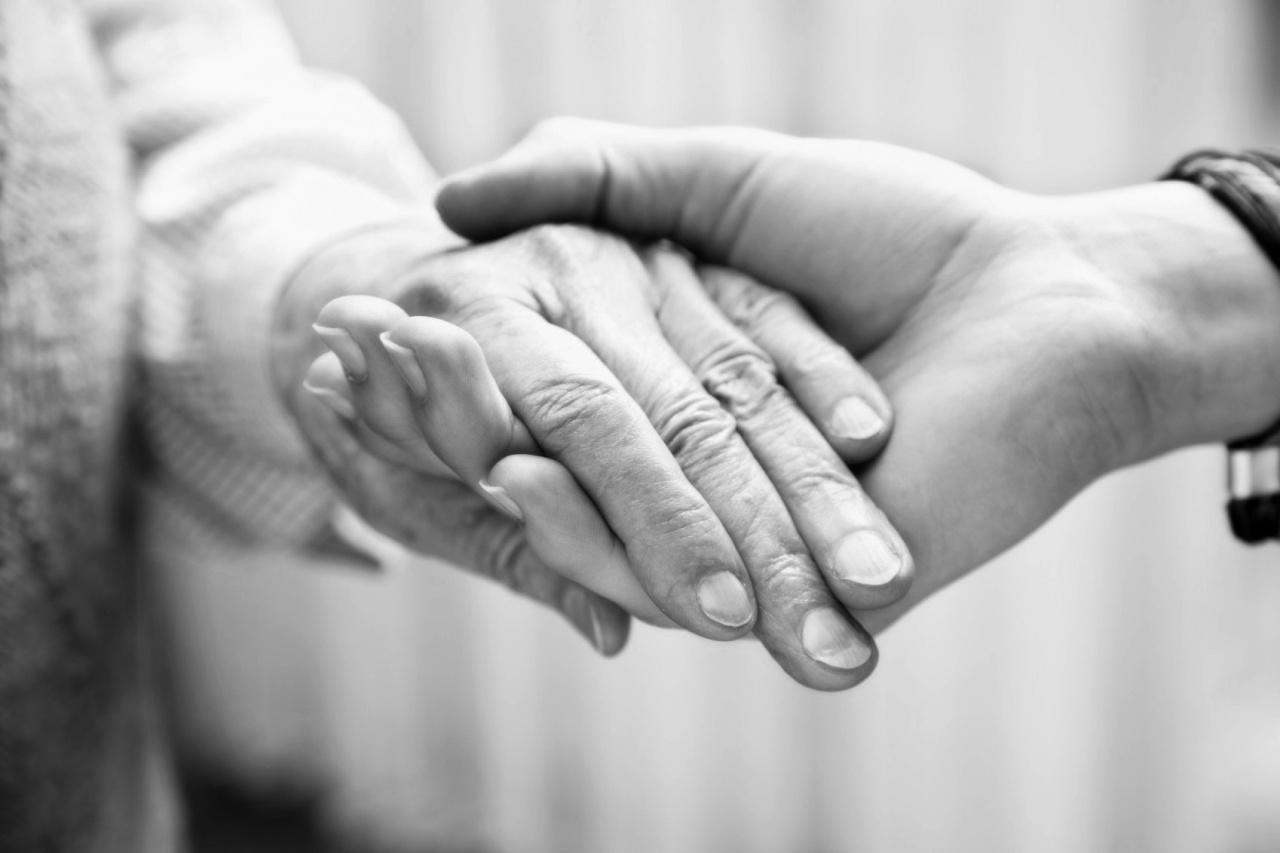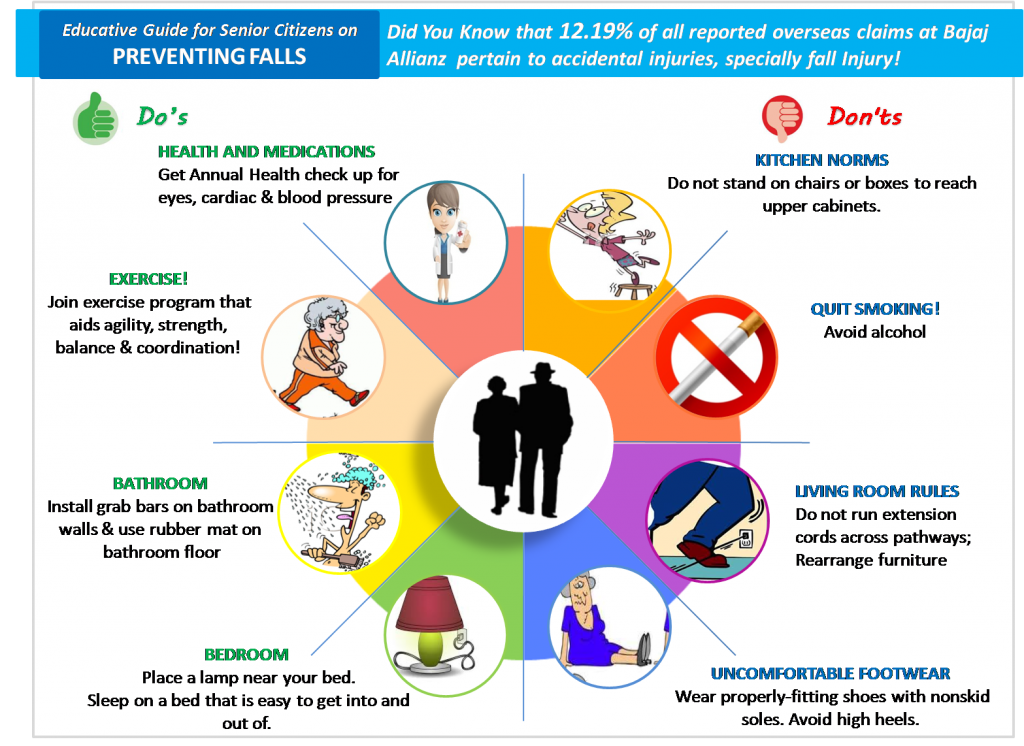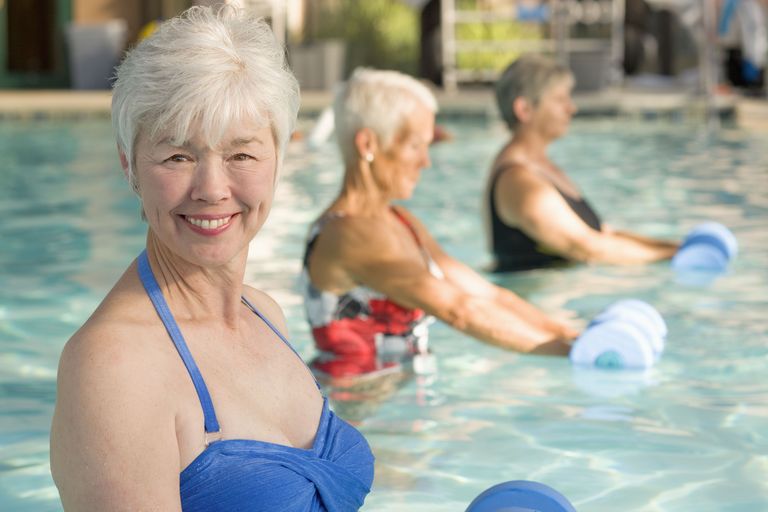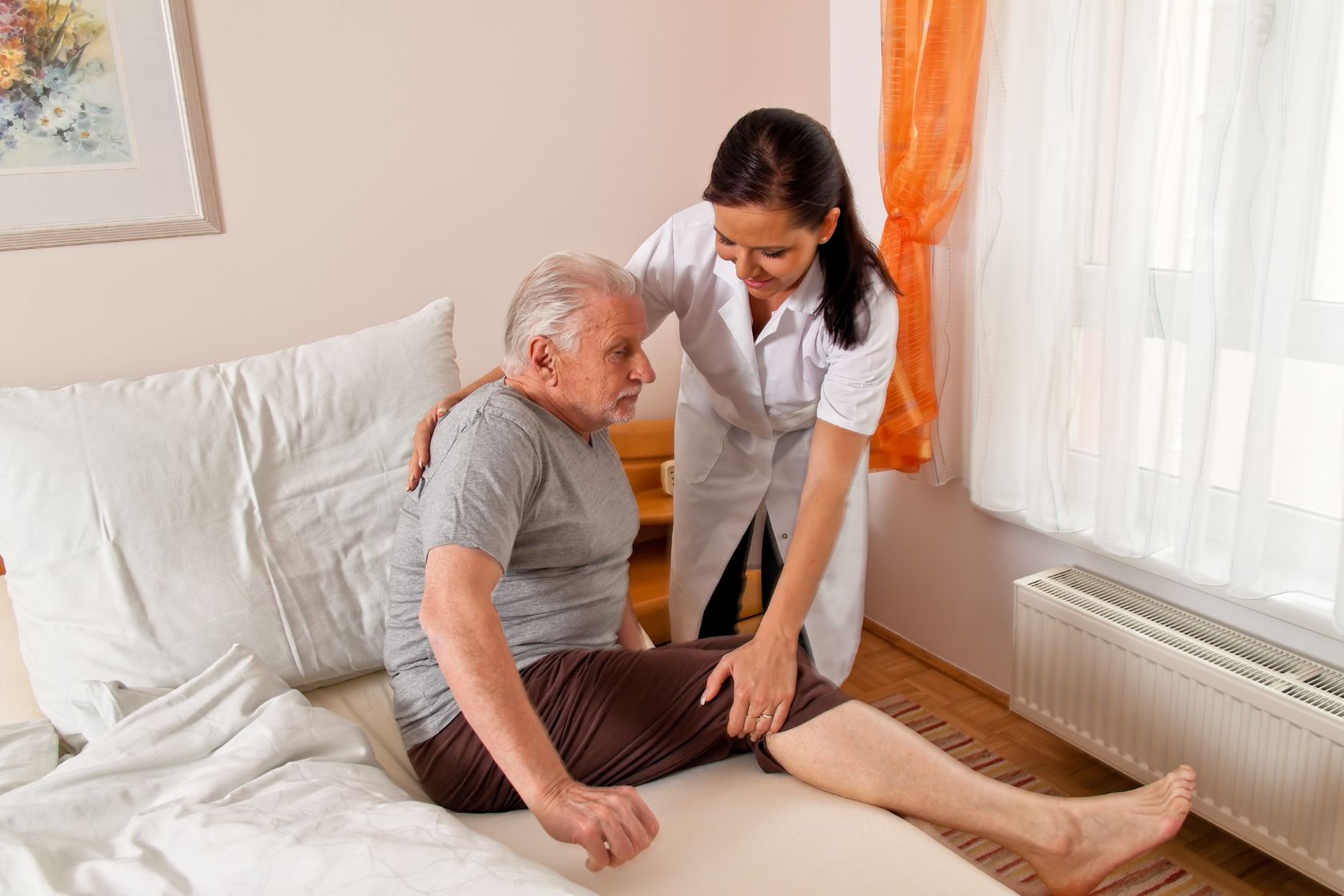Fall Prevention in the Elderly

Fall prevention in the elderly
can go a long way in ensuring better life expectancy, as fractures are far bigger issues in aging people, perhaps one of the biggest fears that seniors have to address in their daily lives. According to the National Council on Aging, one in three people who live at home over the age of 65 suffers a fall each year, and this number increases to one in two by the age of 80.
Fall-related injuries are often serious enough to result in hospitalization and even premature death; moreover, those who fall often face significant declines in mobility and independence.
Reducing the risks that might cause an accident should be priority one, so elderly citizens can adapt to their surroundings according to their abilities and disabilities. Various aspects are to be considered on the personal level, such as the person`s decreased balance over time. Housing and an overall assessment of the person`s health is also a key factor in determining what steps to follow in order to adapt the person and the immediate surroundings.
Some of the top recommendations are:
- Installing handrails in key spots (specially bathrooms and stairs )
- Properly lighting all home areas
- Having eyeglasses as prescribed
- Conveniently placing furniture for support
- Eating properly balanced foods for energy
- Wearing anti slip footwear
Balance Activities
Doing balance-promoting activities such as Yoga or Tai-Chi can help a lot, also with concentration – not to mention that it helps with ligament and muscle strength, flexibility, and coordination. The use of walking canes or rollator walkers might be needed, and as time goes by, a wheelchair or a scooter. The graphic below shows the Dos and Don`ts for senior citizens on preventing falls.
Educative Guide: Preventing Falls

Muscle strength decreases with older age, which is another factor to consider. Inactivity leads to weakened muscles and conditions such as Arthritis, Parkinson`s and Osteoporosis promote stiff joints that make it even worse. It is necessary to do exercises in bed or outside, always following the physician`s guidance. In most assisted living facilities, villas or home care programs it is recommended to keep a schedule of physical activities and exercises, such as:
- Walking
- Swimming Pool exercises
- Massage Therapy
- Stretching
- Yoga
- Tai Chi
Keeping the elderly active is the best way to increase mental, physical and spiritual health, as fears of falling will decline with balance and coordination improvement, giving them more peace of mind. While having a personal assistant is priceless, feeling that as a secondary need fosters more independence for those who can achieve a higher level through these activities. Another reason that might lead to falls in elderly or seniors is shortness of breath, which could be dealt with in most cases by quitting smoking, starting a physical activity program, and a new diet ( always follow your doctor`s instructions before starting any new diet or physical exercise program ).

Medication side effects can also be a reason for a fall due to dizziness. Always make sure of unwanted side effects to be prepared for it, and talk to the doctor about it.
Having a rail on the bed sides can avoid a rollover fall, and in some cases even a fall alarm can be effective so caregivers can act on time. Shoes and foot issues. Properly fitting, anti skid shoes are a must have for the elderly, specially those with calluses, corns and other foot-related issues that cause discomfort when walking. People with swollen feet must keep them high when sitting down.
Fall prevention in the elderly also involves sleep, and the triad of comfort, food and medication: having a good mattress adapted to the individual`s needs will allow for better sleep, same with the pillows. Some people with osteoporosis need a firm mattress, and memory foam ones are considered top choice among seniors. Pillows come in all sizes and shapes, hence the reason the Assisted Villas by GT offer its clients choice of six different types. Medication plays an important role because one of the side effects of certain meds is somnolence, which makes people get up from bed late at night. Alcohol is known to cause somnolence too, so it`s best to avoid it.
Bowel and bladder urgencies cause people to get up from bed quicker, so it is recommended to have a urinal or commode by the bedside. A lamp on the bed table helps avoid getting up. Several measures such as going to the bathroom before bedtime, keeping a good fibre-rich diet and having enough fluids to avoid constipation will result in less bowel or bladder urgencies. Another aspect to consider when planning fall prevention in the elderly is shelves and cabinets height and placement. Instead of standing on boxes or step ladders, try using a long reach grabber. Better yet, avoid using the higher cabinets as much as possible.

Living in a rush can only worsen the risk factor for seniors, so slowing down might actually become the most attractive option.
When the phone rings, it is best to have it near you so get a cordless phone ( or a mobile one ). Plan ahead and make a list of activities for the week or month, so there is no rush and no danger of falling due to rushing.
Home Safety
becomes the centerpiece of any adaptive action towards the avoidance of falls, and the list is extensive. Among those:
- Poor lighting conditions.
- Slippery floors.
- Uneven walking areas.
- Clutter on the floor.
- Pets around the person`s feet.
- extension cords.
- Obstacles on stairs.
- High cabinets or too low shelves.
- Throw carpets, specially fluffy, deep ones.
- Step stools.
- Badly positioned furniture.
- Lack of handrails.
- Monotone stair, carpet, or floor coloring.
- Poorly used assistive device.
Fixing poor lighting conditions is not that hard these days, as there are many low powered Led lighting solutions for all types of areas. Dealing with spills is easier for those with assisted living, as staff will manage any liquids. Uneven walking areas can be marked, converted to a platform or altogether eliminated. Having a maid or avoiding clutter is not that difficult for most people. Beware of pets around elderly feet, it can be a major source of falls.
Extension cords must always be taped to the wall, or better yet replaced by a wall outlet if possible. Seniors can use a grabber for the cabinets as mentioned before, or rely on the lower shelves. Velcro can be the way to go to secure throw carpeting, or get rid of it. Furniture, if placed strategically can become a great way ti support seniors when walking inside the home. Handrails on the other hand will make it easier where no furniture can replace it.
Bedroom Safety
One of the places where elderly spend a lot of time is the bedroom, which should follow certain guidelines. The bed should be the proper height for the person and assistive devices do help a lot. Bedrails avoid certain falls from the side, and door knob level adapters or level handles make it easier to open any door. Having an automatic light that turns on when someone gets up can be handy, also a bed lamp or easy to reach light switch. Some of the top home safety recommendations start in the bedroom:
- Proper bed height.
- Dressing chair in the bedroom.
- Reduced door thresholds.
- Accessible closets.
- Assistive devices.
- No throw rugs.
- Automatic lights.
- Bedside table lamp.
- Smoke detector.
- Nurse alert system.
Elderly people should avoid bedspreads and linens that reach the floor, to keep feet from getting tangled. The mattress height should be 20-23 inches high from the floor to the top of the mattress ( according to the DREDF ).
Bathroom safety
According to the CDC, each year 2.8 million older people are treated in emergency departments for fall injuries ( CDC, important facts about falls ). More than one out of four adult falls but less than half tells their doctor. Head injury or hip fracture occur more often.

Bathroom falls account for the largest percentage among seniors, no wonder why. Installing grab bars, and using shower benches, toilet seat raisers, hand held shower heads, tub raisers, non slip rugs and other important add ons makes the much needed difference seniors need for their safety and comfort. Accessible bathrooms are a reality now, be it new or retrofitted according to each person`s needs. Fall prevention in the elderly must start in the bathroom, period.
Kitchen Safety
FEMA reports that people over the age 65 have a 2.5 time greater risk of dying in a kitchen fire than the general population. CDC reports that aging adults can succumb more easily to food poisoning because of the natural decrease in their immune system, and have a harder time fighting it off. Elderly people react less quick to accidents such as fire, specially if they are under medication that affect cognition, have decreased balance abilities or diminished mental conditions. Items stored out of reach, either too high or too low, can become a trigger for a fall. Some recommendations to implement fall prevention in the elderly and other accidents when in the kitchen:
- Add proper lighting to the kitchen.
- Clean grease and spills on the floor immediately.
- Place items within easy reach.
- Use glass-like plastic items instead of breakable glass ones.
- Use extended grabbers instead of leaning and reaching.
- Lock cabinets where dangerous items are kept ( knives, etc ) if seniors with dementia can reach them.
- Fumigate to avoid ants, roaches or other pests.
- Install a smoke detector in the kitchen, check it from time to time.
- Secure area rugs to the floor.
- Check the refrigerator and pantry and throw out expired food.
Outdoor environment
Elderly people should avoid uneven, wet ground whenever possible, specially carrying heavy or vision-blocking objects ( overloaded with groceries, etc ). Tree roots in the garden should be avoided, also sidewalk curbs, bumps and holes.
Having someone to drive you is the best choice, and if weather is tropical then clothing can be lighter and more casual. Those who use wheelchairs take great advantage of vans with a lift, or a ramp. It is always a great idea to carry a mobile phone with important numbers to call in case of an emergency.


